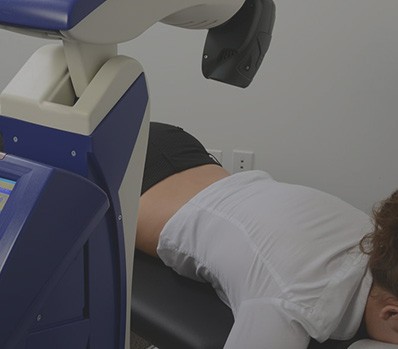The labrum is tough, resilient cartilage that protects the shoulder joint and connects to important structures involved in the motion of the shoulder. As we age, some wear and tear of the labrum can be expected. When the edge of the labrum loses some of its natural smoothness, this deterioration often goes unnoticed, and does not require treatment unless it is causing discomfort or preventing the enjoyment of favorite activities.
Sometimes the labrum tears as a result of a shoulder dislocation or other type of injury. It may be torn off the bone, or it can tear where it attaches to the biceps tendon. Because the labrum is at the center of so many important connections involving the shoulder joint, such a tear will result in significant pain and loss of range of motion.
SLAP Tears
SLAP is an acronym that explains where and how one type of tear can happen: superior labrum anterior and posterior. SLAP is a full tear of the labrum, the large tendon that surrounds the shoulder joint socket, and as the name suggests it can occur when the head of the joint is abruptly moved forward (anterior) or backward (posterior). Because this injury is more likely when the arm is fully extended, athletes who perform repetitive overhead motions frequently develop a SLAP tear.
One clue that the tear is a SLAP is when a patient feels pain when extending an arm upward. In addition to pain, a sufferer may also experience a feeling of popping or clicking in the shoulder. Some patients with SLAP tears report no symptoms and do not require surgical intervention. Some mild tears can be treated conservatively, with rest, exercise, ice packs and over-the-counter pain medication.
Diagnosis
The nature and extent of a labrum tear is usually not apparent from a physical examination alone. Even an MRI or CT scan cannot always quantify internal damage. An MRI will often miss small tears, and the internal physiology of the shoulder area is so complex that even a sharp image from one of these scans may not tell the whole story.
The gold standard in precise diagnosis is arthroscopy, a procedure in which a slender surgical instrument is inserted through a small incision in the skin, allowing a surgeon to examine the tear close-up, and sometimes to make repairs during the same procedure.
The skill of your surgeon is not only important in conducting an arthroscopic search for labrum damage, but also in determining which tears may be causing your pain and swelling. Some tears are asymptomatic and others that may appear insignificant may be the prime cause of your symptoms. Knowing how to identify each type of tear requires extensive experience, training and judgment.
Surgery
If the labrum is simply frayed at the edge, which is a normal part of aging, you can easily live with this if you are experiencing no symptoms. If a tear of the labrum is the result of a shoulder dislocation, the labrum needs to be reattached, often using sutures or tacks. This can sometimes be done with a arthroscopic procedure or with open surgery. It all depends on the location and extent of damage.
An arthroscopic procedure allows a surgeon to perform repairs in the body with tiny surgical instruments inserted through one or more small incisions. This approach is especially effective in the case of a labrum tear in hard-to-reach areas, such as near where the labrum attaches to the biceps tendon. Using a arthroscopic technique, large tears can be removed, repaired or trimmed.
Recovery
After surgery, you will be sent home in a sling that will keep your arm immobile. You should allow four to six weeks for the labrum to become securely attached to the bone. Even at that point it will be fragile, requiring another month or more to sufficiently strengthen.
When healing is advanced, it will be time to begin exercising the joint to build strength and widen range of motion, which at first will seem restricted. This should be done with home exercises and a prescribed course of physical therapy. Eventually you should expect to reclaim full use of your shoulder, and even resume vigorous physical activity in the near future.
If you would like to know more about labrum tears, schedule a personal consultation with skilled Dayton, Ohio orthaepedic surgeon Dr. Paul A. Nitz by calling or emailing his office today.

